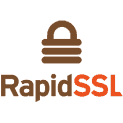Top 10 Cloud Security Issues That Businesses Need To Address

Here are the 10 cloud security issues that organizations need to address:
1. Data Breaches
Data breach is a security issue that dates back to long before the Cloud technology came into existence. The concern seems to get even bigger with the adoption of the cloud as the organization’s data is stored online rather than on-premises. The key reason that data is more vulnerable in this environment is the weakness of user authentication in addition to lack of encryption. Ensuring multifactor authentication, enforcing data encryption, and using strong access credentials are some preventive measures against data breaches.
Comodo Positive SSL
RapidSSL Certificate
Thawte SSL123 Certificate
2. Negligence
Another significant threat to cloud security comes from within the organization, due to employee negligence and errors. As the BYOD trend increases in the enterprise scenario, employees get the freedom to log into the cloud from their smartphones, laptops, and computers. This, in addition to weak passwords and poor user authentication, exposes the entire system to external threats. The best way to handle this concern is to use encryption keys, strong passwords, and multi-factor authentication for accessing the cloud.
3. Compliance
Cloud adoption by an organization is based on certain compliance requirements that are specific to the industry and country of operation. For instance, a healthcare provider has to look for a cloud solution that is HIPAA compliant so that the security of patient-related medical data is absolutely guaranteed. An absence of a compliant architecture translates into a risk to the data on the cloud.
4. Data Loss
Another major cloud security issue that businesses need to address is that of data loss, which may happen due to various reasons. Data may be deleted, corrupted, or be rendered unusable and unreadable intentionally or unintentionally. A hacker may not always be responsible as it could happen due to a human error or a natural calamity. The best way to address data loss issues is to partner with a reliable cloud service providers that have data loss prevention, backup, and recovery practices in place.
5. Malware
Malware injection attack is another major concern associated with cloud security. These attacks happen when a script or code embeds itself into cloud services and become a part of a service or software running on the cloud servers. As a result, the cloud starts operating in tandem with the malware and give attackers the permission to access and steal confidential data and information. A File Allocation Table (FAT) system architecture is a preventive measure against these attack.
6. Shared Vulnerabilities
Businesses also need to be concerned about the vulnerabilities they share with the cloud providers as cloud security is a shared responsibility for the client and the provider. In this scenario, both need to do their part to strengthen the security of the cloud. While the provider should follow the standardized procedures, the clients should make it even stronger with measures such as the protection of user passwords, multi-factor authentication, and access restrictions to files and devices.
7. Insecure APIs
Application Programming Interfaces (API) enable customization of cloud experiences to suit the needs of the business. At the same time, they act as a double-edged sword as they also act as a significant security threat to the cloud environment. API vulnerability is attributed to the communication which takes place between applications as developers use them to enhance features such as authentication and encryption.
8. System Vulnerabilities
Another critical cloud security issue that businesses come across is that the platform has some system vulnerabilities of its own. This is particularly more prevalent in networks with complex infrastructure and multiple third-party platforms. The challenge can be effectively addressed with measures such as regular vulnerability scans, continuous network monitoring, timely security patch installations, and upgrade protocols as and when required.
9. Unauthorized Access
Unauthorized access to the cloud environment is a considerable security threat for organizations as it may make the confidential business data fall into wrong hands. User authentication is the best action that they can take to check such events. Additionally, they need to monitor the users who are accessing the cloud data of the business.
10. Absence of due diligence
Lack of due diligence from the workforce is another serious security risk for any organization that embraced the technology. Security gaps usually occur in the absence of clear goals, proper policies, and inadequate resources. Businesses that deal with financial data and data that falls under regulatory laws are more likely to face these issues.
Conclusion
Despite the security risks that come with the adoption of the cloud, the technology still remains an attractive proposition for businesses. They are willing to go an extra mile to resolve the security threats so that they can explore the potential of the cloud. The good news is that all these threats can be handled with collaborative efforts of the business and the cloud provider.
About Sneha Singh

Sneha is a business analyst at a leading Cloud technology solutions provider in India. If you are looking for a reliable digital transformation partner for your business, connect with OrangeMantra Tech.
See Author’s Website


